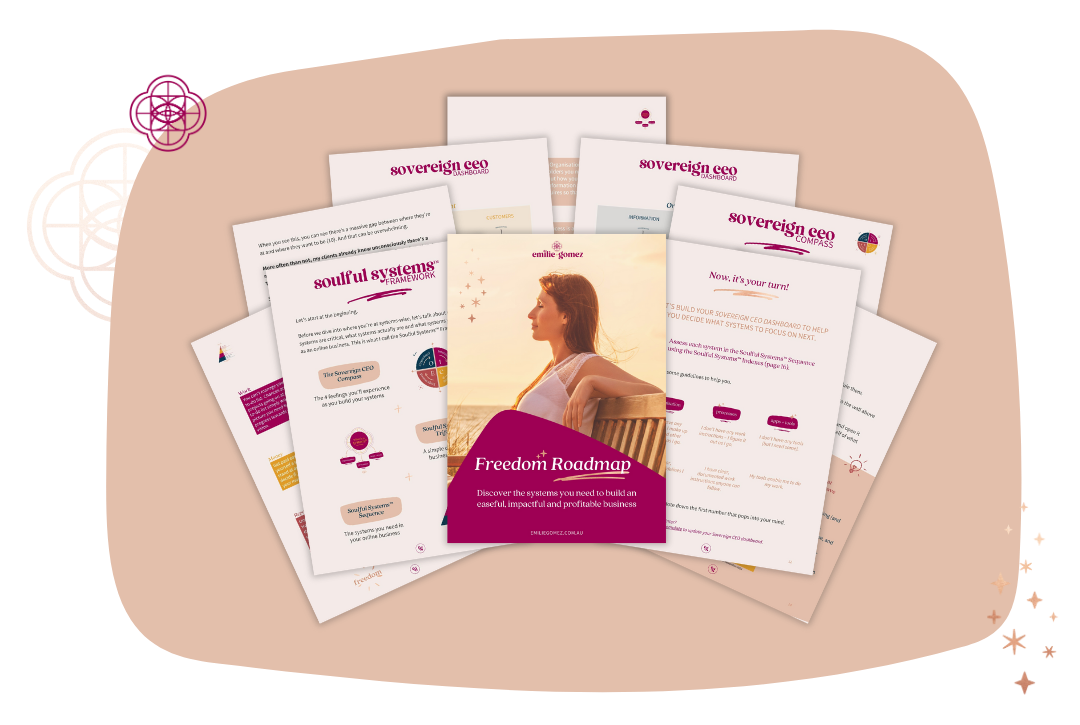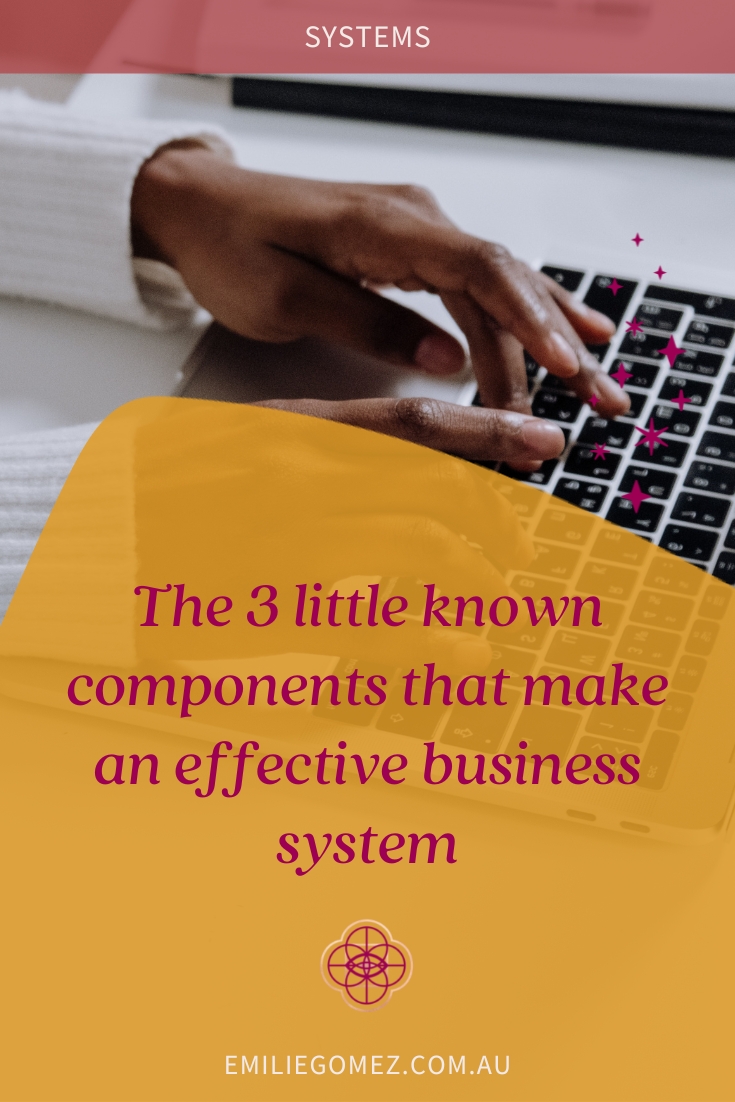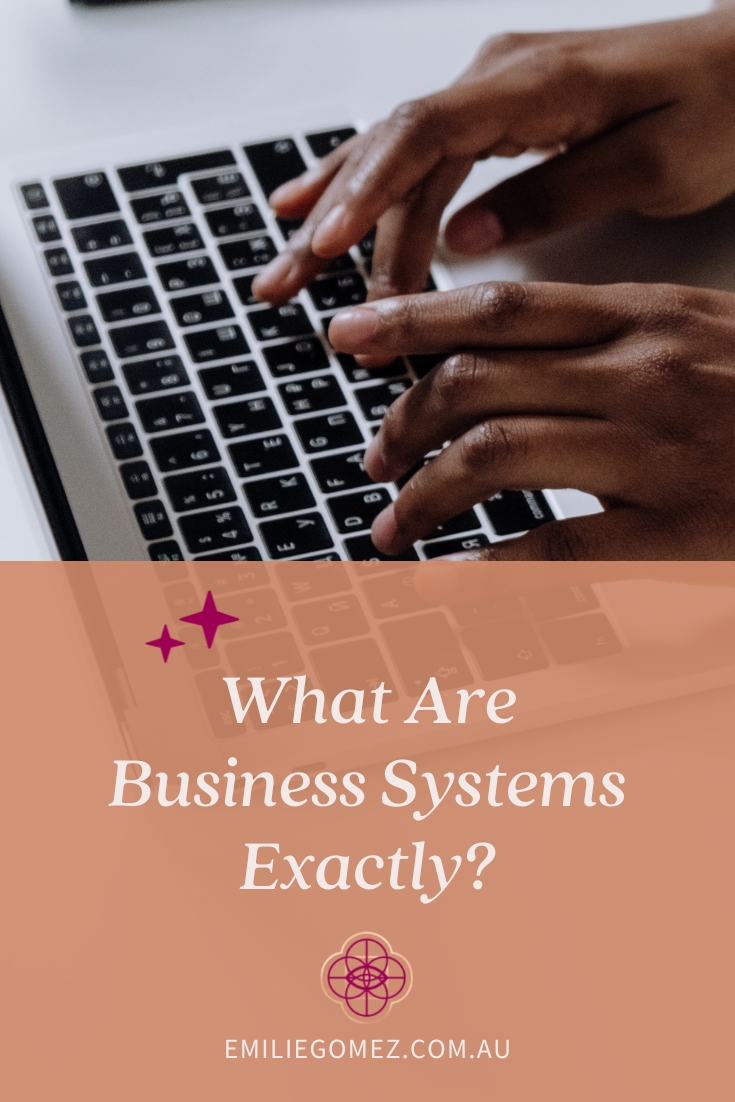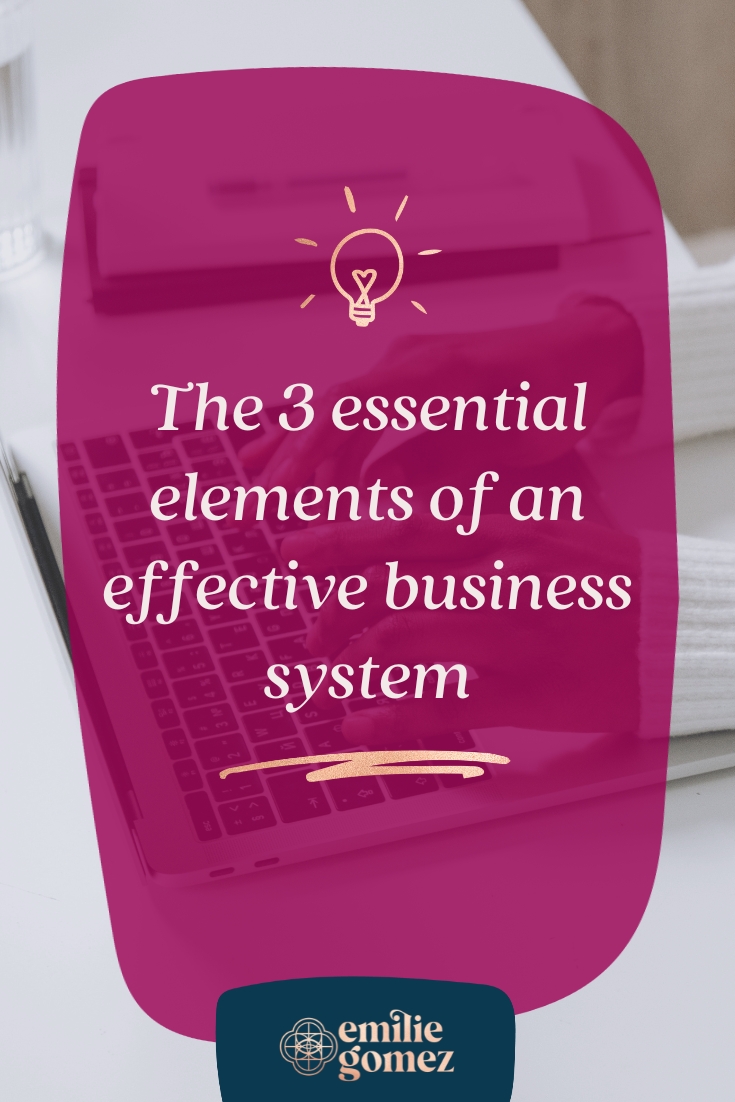This post contains affiliate links. If you sign up for an app using one of those links, I’ll get a small commission. I only recommend systems that I love and use in my business or with clients.
This is Part #1 of my 3-part Soulful Systems™ Framework. Here are Part #2 and Part #3.
In today’s online business world, it seems that everybody – and I mean everybody – is going on about systems. The thing is, though, these business coaches and other “experts” rarely, if ever, tell you what systems are.
They’ll gladly tell you you need them (no argument from me here!), but it often feels like we’re expected to know what they mean by “system”. And the reality is not everybody knows.
And I’ve been guilty of using the word without defining it, so when a prospective client asked me: what do you mean by system? I had to find a simple way to explain it.
In this blog post, I’ll share the answer I gave them, which is now part of my Soulful Systems™ Framework. I’ll explain what a Soulful System™ is and the 3 elements you need to consider when designing your Soulful Systems™.
What’s a Soulful System™?
Put simply, a Soulful System™ is a system that is designed with you in mind. In other words, it works for your unique brain (hello, my fellow neurospicy friends!) and your unique circumstances (and hello to you, my fellow chronic illness sufferers) so that you can create a sustainable business and not burn yourself out.
It may sound like a given that your systems should work for you and not against you. Isn’t that the goal of a system, after all, to make your life easier, not harder?
And yet, most of the solopreneurs who reach out to me share the same stories. They’ve:
- bought templates
- tried the tools recommended by their business friends and coaches
- enrolled in that over-priced mastermind promising to share all the secret (not so secret) systems to create a 6-figure business.
And the result is always the same: they’re overwhelmed and don’t know what to do with any of it. They don’t know how to adapt these resources to their business, simply because it wasn’t taught. They were sold one solution as if it were THE solution.
Soulful Systems™ are the antithesis of these mass solutions that work for the very few. They require you to understand yourself first and how you want to operate your business so you can create your bespoke systems.
So, how do you design a Soulful System™?
Once you’ve uncovered how you work (and want to work), you’ll want to consider the following three elements to ensure your systems are efficient. This is what I call the Soulful Systems™ Trifecta.
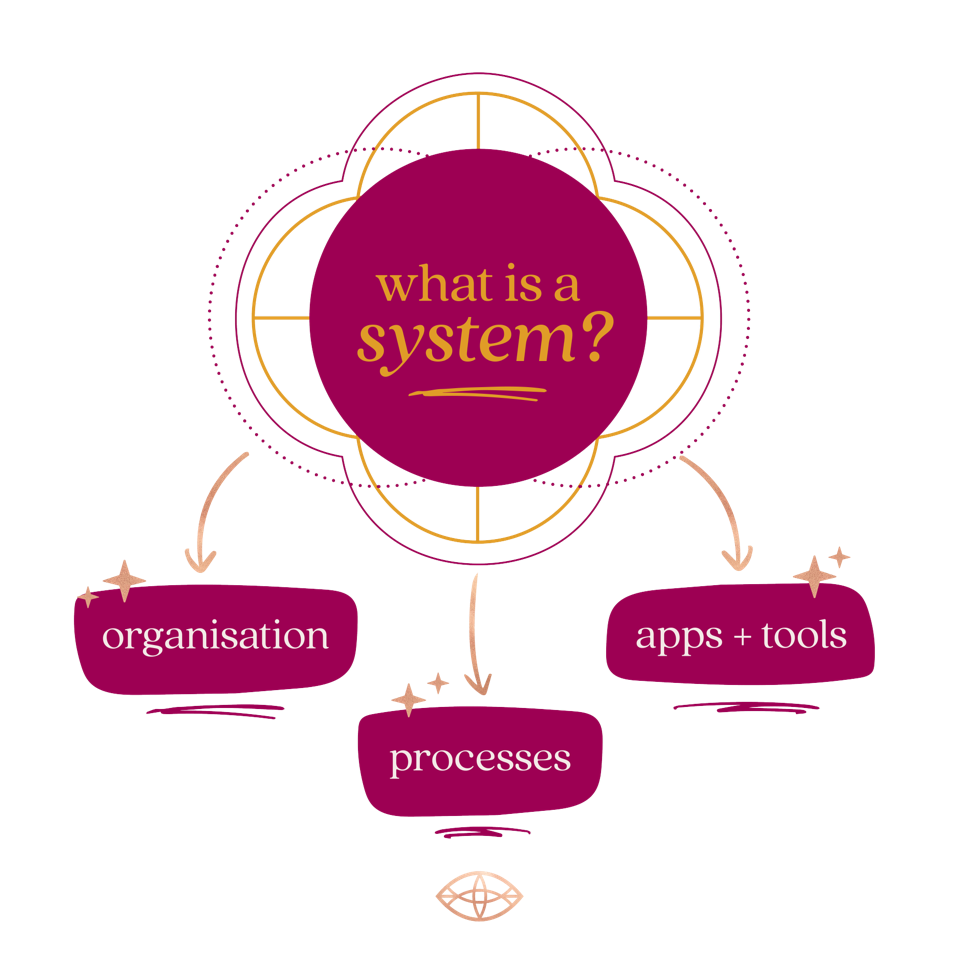
The order of these elements isn’t random. It’s actually crucial to understand what features your tools require.
Let’s break this down:
Element #1: organisation
Organisation isn’t just about what folders you need in Google Drive. It’s about how you organise and store all the information that a particular system requires so that you can easily and quickly find what you need.
Let’s take your Lead Generation System as an example.
Here are some of the organisation guidelines you’ll want to define (among others):
- where you’ll store the lead magnet itself (the finished version)
- where you’ll keep the information of people downloading your freebie
- how you’ll tag the people downloading your freebie
I know you may think this is over the top. But trust me, this is essential. Too many entrepreneurs skip this step and just do whatever will give them the results they’re looking for right away. However, they soon find themselves feeling frustrated and doing the same thing repeatedly (such as creating the same document multiple times) because they can’t remember where they wrote the information last.
Having clear organisation guidelines is also crucial if you’re planning on hiring a team one day. Everyone in your team needs to know where they can quickly find the information they need to do their job efficiently. They also need to ensure that they know how to store the data correctly so others in the team (including yourself) can find it.
Element #2: processes
A process is a series of steps you need to perform to achieve the results you want.
Each step has a set of instructions that details how to complete that step.
These work instructions need to be documented in your Standard Operating Procedures (SOP). They also need to be comprehensive so anyone can perform the steps without knowing anything about your business.
A system can (and likely will) have multiple processes.
Let’s continue with the example of your Lead Generation System.
Some of your processes may include:
- Process #1: create PDF document using Canva
- Process #2: collect email addresses on website
- Process #3: promote new freebie on Instagram
Then some of the steps of Process #2 may be:
- Step 1: create form in email marketing system
- Step 2: create landing page
Then for Step 1, your SOP (or work instructions) may be (with a lot more details, of course!):
- Go to [Add Email Marketing URL]
- Log in
- Go to “Form”
- Click on “Create Form”
- …
Creating an SOP manual may seem like a lot of work at first. But documenting doesn’t mean writing it all down. You can screen-record yourself doing it or use screenshots. Or even better, use Tango – it will take the screenshots and write the instructions for you!
Do whatever works best for you and your team. My recommendation is to start with video (as it’s faster) in case your process changes and then work your way to text and screenshots once your process is stable
Having detailed instructions clarifies what needs to happen when, which is a huge advantage when setting up automation. Don’t try to automate your process before you’re clear on your steps and have tested them many times.
Element #3: apps + tools
I’ve heard business owners use many words to refer to tools, such as systems (as in IT systems), platforms, applications, backend, program, software, tech… They all refer to the same thing: a piece of technology that enables you to perform your process steps.
A system can involve many tools.
The common mistakes I see when business owners decide on a tool:
- They choose the tool first without understanding what they are trying to achieve and how they want to achieve it.
- They select a tool based on what others are doing and without understanding if it’s going to suit them. Of course, the fact that many other business owners use that particular too is social proof that that tool is good… for them. It doesn’t mean that it will suit you and your business.
- They pick a tool based on where they want to be in 5 years, thinking they should invest now. This is a sure way to be overwhelmed and to waste money. By the time you need all the functionalities, your business model may have changed, and you may not need all these features. That tool may also be obsolete with better tools on the market for what you need then.
Don’t make these mistakes! Check out my 3-part guide on how to choose the right business tools for your business.
There’s no “one size fits all” when it comes to business systems.
You need to understand how you operate and how you want to run your business so it’s sustainable and you don’t burn yourself out. Once you’ve figured that out you can use the Soulful Systems™ Trifecta – organisation, processes and tools – in this order, to build your Soulful Systems™.
But remember, systems aren’t fixed. They’re not a “set and forget” aspect of your business. They’ll evolve as your business grows and you refine the way you work.
And yet, most solopreneurs will rarely review their systems as they fear they’ll break something. Instead, they settle for less than optimal systems and put up with the daily frustrations of having systems that no longer works for them.
That’s why learning how to design and implement systems that work for you is such a crucial skills for solopreneurs. In Soulful Systems™ School, I teach you just that so you can create the easeful, impactful and profitable business you’ve dreamed of.
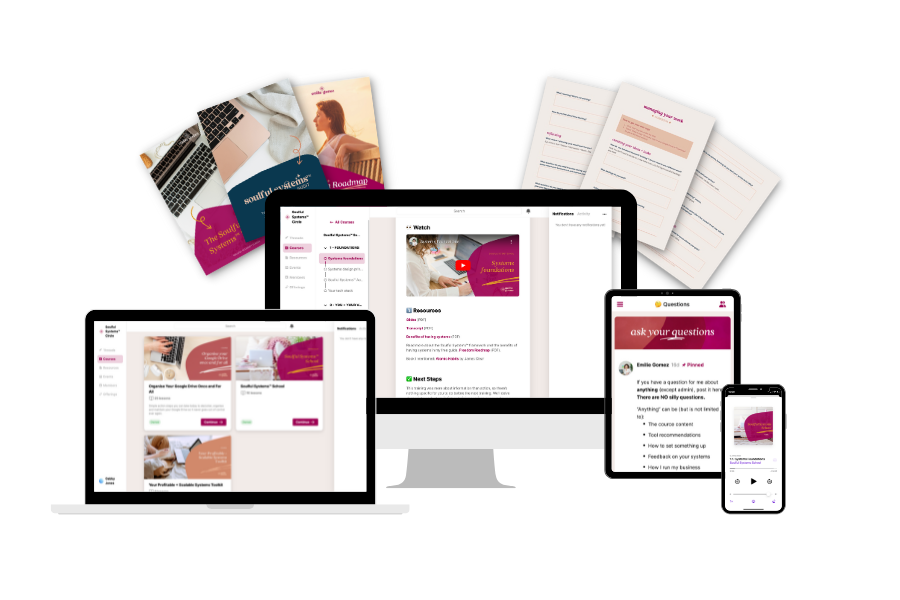
Soulful Systems™ School
Are you a highly sensitive solopreneur who wants to lead an impactful, easeful and profitable business?
Join us in Soulful Systems™ School to learn how to build a simple, yet potent, systems suite that work for you and your unique brain so that you can finally run your business with ease, fun and flow.
This is the first part of my Soulful Systems™ Framework. In Part #2, I share the Intentional CEO Compass and the 4 traits you need to embody to run a profitable and sustainable business.


